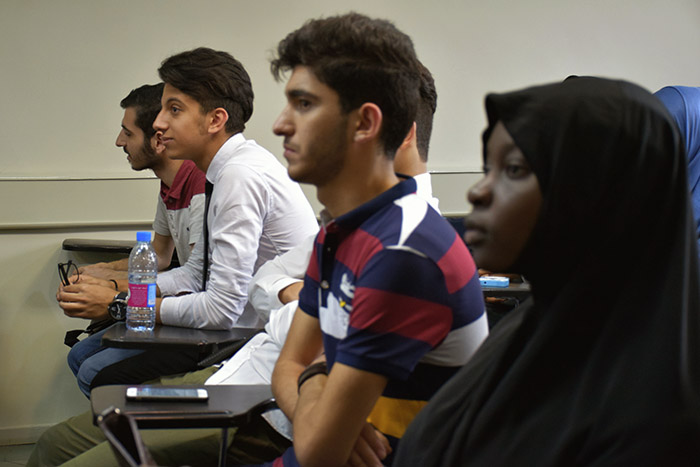Persian Language
|
Persian is the official language spoken in Iran, though certain groups of Iranians might learn other local languages as their first language. As future students of TUMS, you might be required to achieve a certain level of proficiency in Persian. This requirement depends on the program to which you are admitted. Certain majors and programs require students to closely work with patients who speak Persian. For these programs, students must have a good command on this language. In order to facilitate the learning process, Tehran University of Medical Sciences provides Persian language classes to all its international students in the Language Academy of TUMS International College. After registration, experts from our International Office of Admissions will take care of the administrative processes in order for you to start learning the language. Students who are not required to learn Persian but wish to do so as a matter of personal interest can also enroll in the language programs at the TUMS Language Academy. |
 |
|
Persian Iran is a multiethnic country with its people coming from a myriad of cultures and backgrounds. Basically, various languages and dialects are spoken in different regions of the country, namely Persian, Kurdish, Azari, Arabic, Armenian etc. Persian is the official language of the country and the one with the highest number of speakers. It is one of the languages in the Indo-Iranian branch of Indo-European languages and has a 32-letter alphabet. It is mainly spoken in Iran, Afghanistan (known as Dari Persian) and Tajikistan (known as Tajiki Persian). The three variations have many similarities, and Persian speakers from these three countries can, to a considerable extent, understand each other with relative ease. In terms of orthography, the Persian language uses the Arabic alphabet, with the addition of four letters. Also, its alphabet is written cursively, i.e. in almost all words, some or all of the letters are connected to each other. Contemporary Persian has been greatly influenced by French, English and Russian, borrowing and naturalizing many lexical items in the fields of technology, sciences and humanities. Persian is a literary language and numerous poets, writers and historians shine brightly through its history. One of the most notable instances is Hakim Abu ‘l-Qasim Ferdowsi Tusi (حکیم ابوالقاسم فردوسی توسی), commonly referred to as Ferdowsi, who is one of the most revered poets in the world, the author of the epic of Shahnameh (Book of Kings), and a national symbol of the Persian identity and heritage. More importantly, he is known as the preserver of the Persian language.
A verse from Ferdowsi's Shahnameh in Nasta'liq calligraphic hand
The same verse in normal Persian typeface
|

.jpg)
